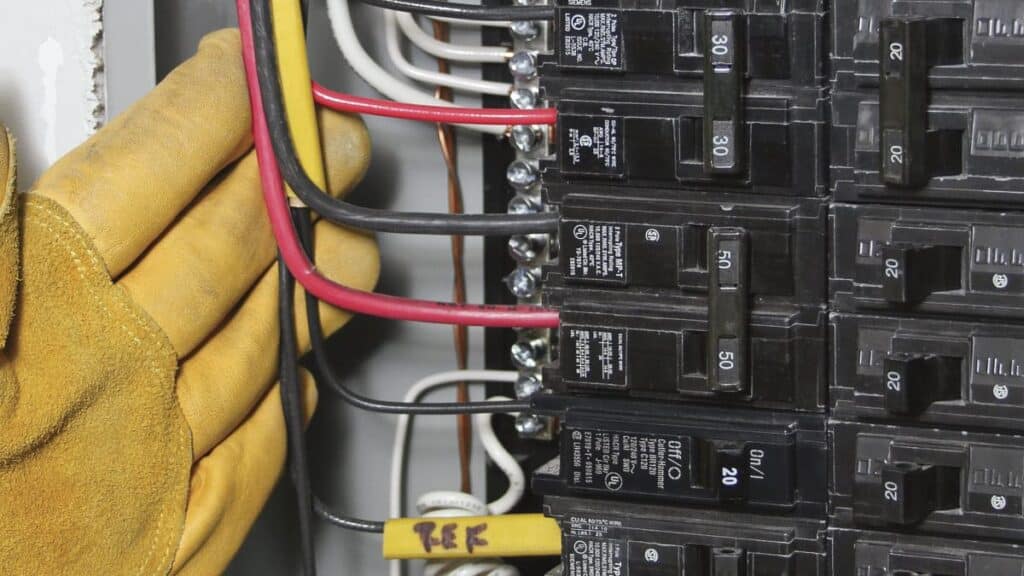Introduction
Welcome to the comprehensive guide on electrical panel boxes! If you’re embarking on a home renovation project or simply want to understand more about your home’s electrical system, you’ve come to the right place. In this article, we’ll delve into everything you need to know about electrical panel boxes, from their function to maintenance tips and safety precautions.
Understanding Electrical Panel Boxes
An electrical panel box, also known as a breaker box or distribution board, serves as the heart of your home’s electrical system. It houses circuit breakers or fuses that control the flow of electricity to different areas of your home. Think of it as a central hub that distributes power safely and efficiently.
Components of an Electrical Panel Box
- Main Breaker: This switch controls the flow of electricity from the utility line into your home.
- Circuit Breakers: These switches protect individual circuits from overloads and short circuits.
- Bus Bars: Conductive metal strips that distribute electricity to various circuits.
- Neutral Bar: Connects the neutral wires from the circuits to the main electrical panel.
- Grounding Bar: Provides a connection point for grounding wires to prevent electrical shock.
Types of Electrical Panel Boxes
There are several types of electrical panel boxes available, each catering to different needs and preferences. Here are some common types:
1. Main Lug Panel
Main lug panels lack a main breaker and are commonly used as subpanels in homes where the main breaker is located elsewhere.
2. Main Breaker Panel
Main breaker panels feature a built-in main breaker, making them suitable for standalone installations in homes.
3. Fuse Box
While less common today, fuse boxes contain fuses instead of circuit breakers to protect circuits from overloads.
4. Subpanel
Subpanels are additional panels connected to the main electrical panel and are used to expand the number of circuits in a home.
Signs of Electrical Panel Box Issues
It’s essential to be aware of signs indicating potential problems with your electrical panel box. Ignoring these signs could lead to safety hazards and electrical fires. Look out for:
- Frequent Tripping: If circuit breakers trip frequently, it could indicate overloaded circuits or faulty breakers.
- Burn Marks or Odors: Burn marks or strange odors around the panel box suggest overheating or electrical arcing.
- Corrosion: Rust or corrosion on the panel box may indicate moisture issues that can compromise safety.
Maintaining Your Electrical Panel Box
Regular maintenance is crucial to ensure the safety and efficiency of your electrical panel box. Here are some maintenance tips:
- Schedule Inspections: Have a licensed electrician inspect your panel box annually to check for any issues.
- Keep it Clear: Avoid cluttering the area around the panel box to ensure easy access during emergencies.
- Update as Needed: Consider upgrading your panel box if it’s outdate or unable to meet your household’s electrical demands.
Safety Precautions
Safety should always be a top priority when dealing with electrical systems. Follow these precautions:
- Turn Off Power: Before working on the panel box, turn off the main breaker to cut off electricity.
- Use Protective Gear: Wear rubber-soled shoes and insulated gloves to protect against electric shock.
- Leave it to Professionals: For complex issues or installations, always hire a qualified electrician.
FAQs (Frequently Asked Questions)
- What is the purpose of an electrical panel box? An electrical panel box serves as the central distribution point for electricity in a home, controlling the flow of power to various circuits.
- How often should I have my electrical panel box inspected? It’s recommended to have your panel box inspected by a licensed electrician annually to ensure safety and efficiency.
- Can I upgrade my electrical panel box myself? While simple tasks like replacing circuit breakers can be DIY, major upgrades or installations should be handled by a professional electrician.
- What causes an electrical panel box to overheat? Overloading circuits, loose connections, or faulty breakers can cause an electrical panel box to overheat, posing a fire hazard.
- How do I know if my electrical panel box is outdated? Signs of an outdated panel box include frequent tripping, flickering lights, or the presence of a fuse box instea of circuit breakers.
- Is it dangerous to reset a tripped circuit breaker? Resetting a tripped circuit breaker is generally safe, but if the issue persists, it’s essential to investigate the cause to prevent future hazards.
Conclusion
Understanding your home’s electrical panel box is essential for ensuring safety and efficiency. By familiarizing yourself with its components, maintenance practices, and safety precautions, you can better protect your home and loved ones from electrical hazards.


